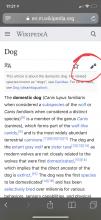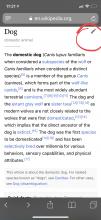Steps to Reproduce
- Make sure you're logged out
- Compare edit pencils of https://en.wikipedia.org/wiki/Dog with those on https://en.wikipedia.org/api/rest_v1/page/mobile-html/Dog
Expected Results
- Edit pencils match
Actual Results
- Edit pencils don't match, all mobile-html pencil are unlocked
Environments Observed
- Prod
Additional notes
- Could we also get information about whether user tapped a locked pencil? On iOS, we show an alert about the page being protected in those cases

